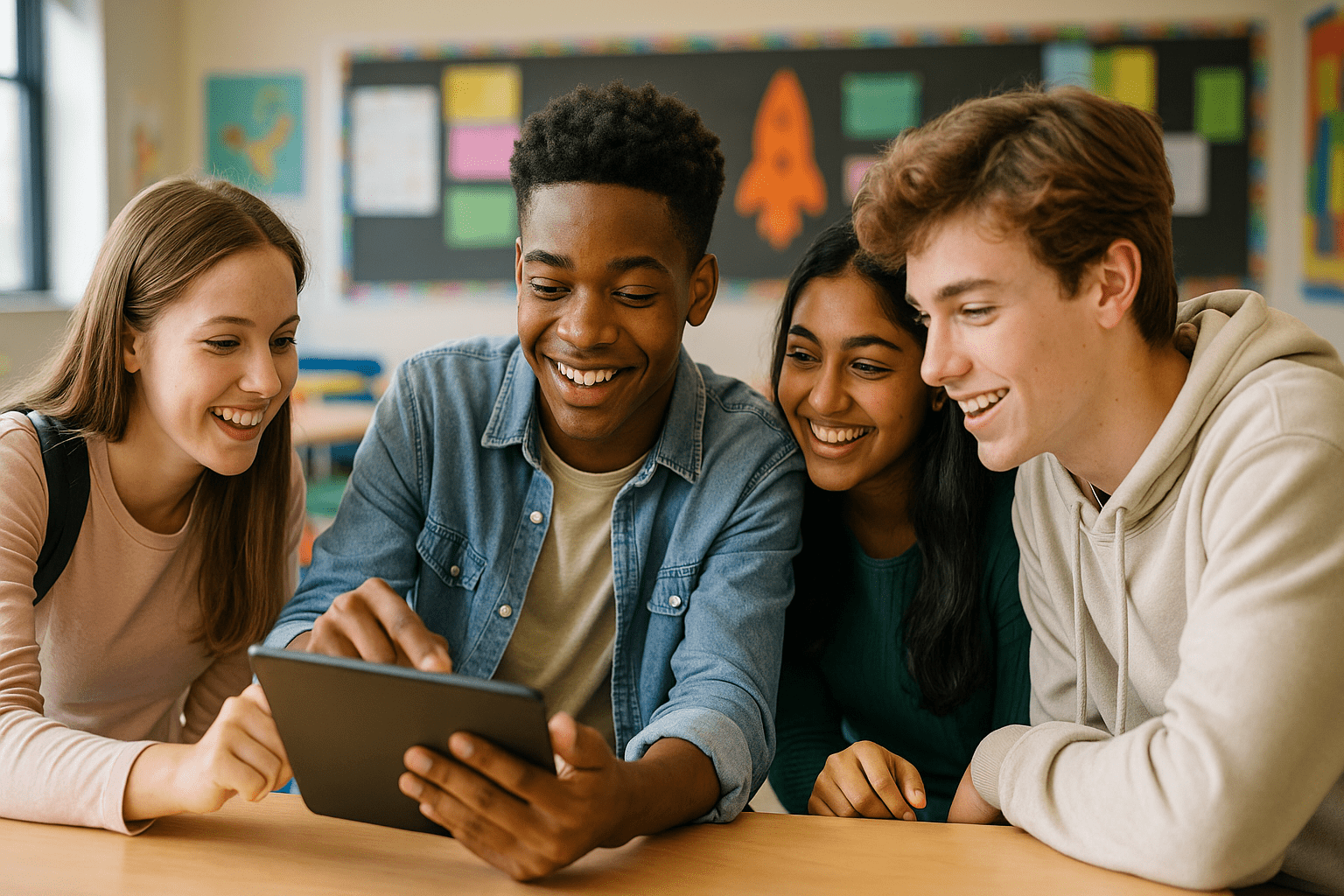A Practical Guide to Social Learning Theory in Education
Social learning in education isn’t just a buzzword. It’s a vital piece of the puzzle for building collaborative, resilient learners who thrive on shared knowledge-not just individual memorisation. With roots in learning theories like social learning theory, and shaped by the work of Albert Bandura, modern educational strategies have leaned heavily on peer connection, community engagement, and observational growth to enhance the learning process.
Schools, universities, and workplaces using collaborative and peer-driven models often see improved motivation, retention, and performance. But how exactly does this happen-and what does it look like in real life? Let’s walk through how you can incorporate social learning into your educational environment, with examples, techniques, and key takeaways you can apply today. By fostering an environment where learners can share knowledge and collaborate, educators can facilitate deeper understanding and engagement among students. This approach is essential for making elearning effective in classrooms, as it helps build a sense of community and accountability. Ultimately, integrating social learning strategies can lead to enhanced outcomes and a more dynamic educational experience.
Understanding Key Learning Theories Behind Social Learning
At the heart of every effective learning experience lies a theory. Learning theories help guide the design of educational programs, technology tools, and classroom strategies. Among the many models, social learning theory stands out for its focus on observational learning, imitation, and modeling.
Introduced by psychologist Albert Bandura, social learning theory challenges the idea that learning occurs in isolation. Instead, it emphasises how learning is shaped by social interaction and the social context of the learner.
Bandura’s work builds on earlier learning theories like behaviorism and cognitivism, but adds complexity: people don’t just respond to stimuli; they also watch others, learn from consequences, and then make choices.
Key Concepts From Social Cognitive Theory
- Observational learning – We learn by watching others and observing the outcomes of their actions.
- Modeling – Students imitate behaviors seen in role models such as teachers, peers, or media figures.
- Self-efficacy – Confidence in one’s abilities enhances motivation and achievement.
- Reinforcement – While not essential, rewards and positive reinforcement strengthen learned behaviors.
Why Social Learning Works in Education and Beyond
When a student teaches another how to solve a math problem, or when a new employee shadows a colleague to learn a Moodle™ software workflow, that’s social learning in education and organisational training in action. These collaborative experiences not only enhance understanding but also foster a sense of community among learners. By emphasizing peer interactions and shared knowledge, educators and trainers can significantly improve engagement and retention. Ultimately, this highlights the importance of designing real learning with Moodle, ensuring that the platform supports these dynamic teaching and learning methods. This collaborative approach ensures that knowledge is shared and retained within the community, fostering a deeper understanding among peers. In today’s digital age, platforms like Moodle for effective online learning enhance these interactions, allowing learners to access resources and engage with one another seamlessly. As a result, both formal and informal education experiences are enriched, making learning more dynamic and relevant.
The benefits of social learning extend well beyond the classroom:
- Better retention – Learning in context and through repetition helps ideas stick.
- Increased engagement – Students are more motivated when learning with others.
- Reduced isolation – Especially in Moodle™-based or remote environments, social learning builds belonging.
- Real-world skill development – Students learn problem-solving, communication, and teamwork.
And honestly, when was the last time you remembered something just by reading it vs. talking it out with a colleague over coffee?
Types of Social Learning You Can Use Right Away
Social learning takes many forms across different learning environments. Not every method works for every student, but here’s a breakdown of effective types worth trying:
- Peer tutoring – One student helps another catch up on specific skills.
- Group projects – Collaborative problem-solving and task sharing.
- Discussion forums – Great for Moodle™-based communities or flipped classrooms.
- Video-based modeling – Pre-recorded demonstrations support observational learning.
- Mentorship programs – Common in both education and organisational settings.
Pro tip: Give learners real problems to solve together, not just tasks to complete side-by-side.
Examples of Social Learning Impacting Real Outcomes
Story 1: Upskilling Through Collaborative Content Creation
At a Malaysian higher-ed institution using Moodle™ software, a team of students was tasked with co-creating tutorial videos on cybersecurity. This peer-led learning model dramatically raised information retention compared to traditional lectures. Why? Because the process required observation, explanation, reworking, peer feedback, and group reflection-in other words, everything social learning is built for. This approach not only enhanced understanding of cybersecurity concepts but also encouraged collaboration and communication among students. By fostering an environment conducive to active engagement, the institution began rethinking assessment strategies to align with these innovative methods. The focus shifted from traditional testing to assessing group dynamics and the application of knowledge in real-world scenarios, further enriching the learning experience.
Story 2: Customer Support Teams at a Telecom Company
In a corporate setting, employees onboarding into a technical support role watched recorded calls from expert agents. One new rep reported, “Watching how someone else handled a difficult caller taught me more in 5 minutes than reading the script ever did.” That’s the power of observational learning.
How to Incorporate Social Learning into Your Practice
Want to implement social learning? Start with the basics:
1. Foster a collaborative environment
- Use group-based assessments to make collaboration rewarding.
- Design the learning process with joint goals.
2. Provide modeling opportunities
- Show skilled performances before asking students to replicate.
- Use screen-sharing or in-person demos.
3. Embed reflection tasks
- “What did you learn from your teammate today?”-simple but powerful.
4. Design for interaction in Moodle™-based courses
- Use forum-based discussions, wiki editing, and peer review tools.
The sooner you look at peers as co-teachers rather than as distractions, the sooner you’ll unlock better engagement.
Common Criticisms of Social Learning Theory (And Why They Matter)
While social learning theory offers a compelling framework, it’s not without limitations. Some educators argue it underplays the role of internal cognition, motivation, or biological differences. Others point out the difficulty in assessing individual accountability in group work.
But here’s the trick: no theory of learning works perfectly on its own. The best teaching blends multiple models, adjusting when needed. Learning occurs in both independent and social spaces, so the goal isn’t to choose one over the other-it’s about using each wisely.
Smart Ways to Apply Social Learning Strategies
Want quick wins? Here’s how to apply social learning in your context:
- Create visible role models – Feature student success stories, exemplary past projects, or even short video interviews.
- Use discussion prompts with real tension – Instead of “What did you like most about this unit?” ask “What would you change if you were teaching this topic?”
- Incorporate informal learning moments – Online groups, Slack chats, or lunch-and-learn discussions.
Helpful Tools to Support a Social Learning Environment
Several platforms and approaches can accelerate the social learning experience. Consider these:
| Tool | Purpose | Use Case |
|---|---|---|
| Moodle™ forums | Peer-to-peer discussion | Students troubleshoot common problems |
| Padlet | Collaborative brainstorming | Group research and feedback walls |
| Trello | Project management | Track team tasks in real-time |
| Zoom breakout rooms | Small-group dialogue | Case-based scenarios in class |
FAQs About social learning in education
What is the meaning of social learning in education?
Social learning in education refers to the process where learners acquire knowledge by observing, interacting, and collaborating with peers, educators, or role models. It recognises that learning happens not just through direct instruction but also through social experiences and shared activities.
What is an example of social learning?
An example of social learning is when students work together on a group project and learn from each other’s approaches. Another is when a learner improves their public speaking skills by observing a confident presenter and mimicking their speech patterns and gestures.
What are the 4 components of social learning?
The four main components of social learning, as proposed by Albert Bandura, are: Attention (noticing the behavior), Retention (remembering it), Reproduction (duplicating it), and Motivation (having the reason to imitate it).
What is the role of social learning theory in education?
Social learning theory plays a crucial role in education by highlighting the importance of modeling, peer interaction, and observational learning. It encourages educators to design environments where students can learn from one another, leading to stronger engagement and deeper understanding.
Let’s Recap: Bringing Social Learning to Life
Social learning in education, when done right, creates a dynamic feedback loop where everyone contributes, learns, and grows together. It draws from powerful learning theories, taps into natural human tendencies for social interaction, and produces resilient, skilled learners ready to handle real-world challenges.
Whether you’re setting up a peer mentorship program in your Moodle™-based course, running collaborative assessments, or coaching teams to share knowledge across departments-embrace the community.
Ready to build smarter learning experiences?
Contact Pukunui Sdn Bhd today to discover how we can help you design thriving, community-powered learning environments. We specialise in supporting leading institutions across Southeast Asia use Moodle™ software to create scalable, socially connected education systems.

